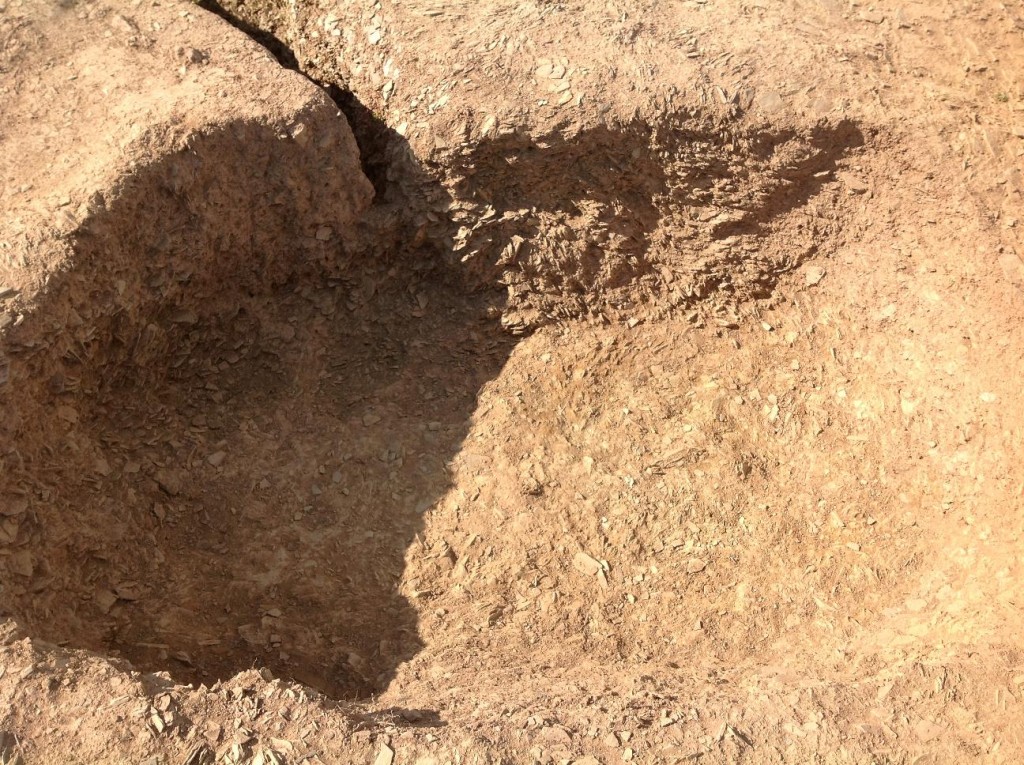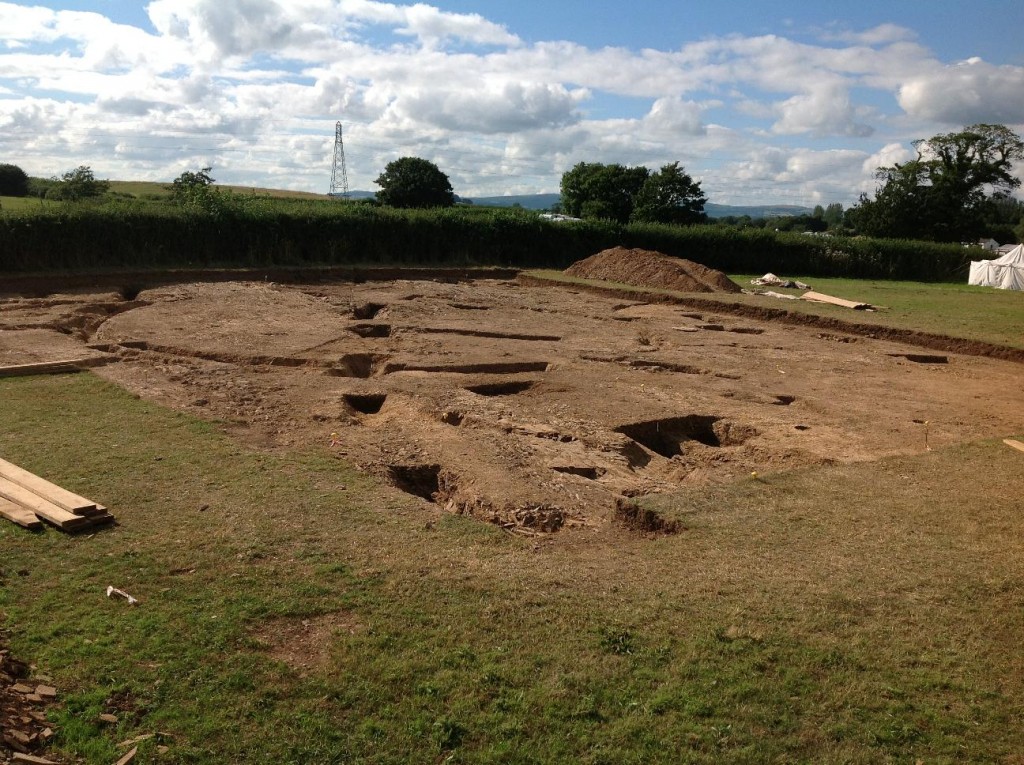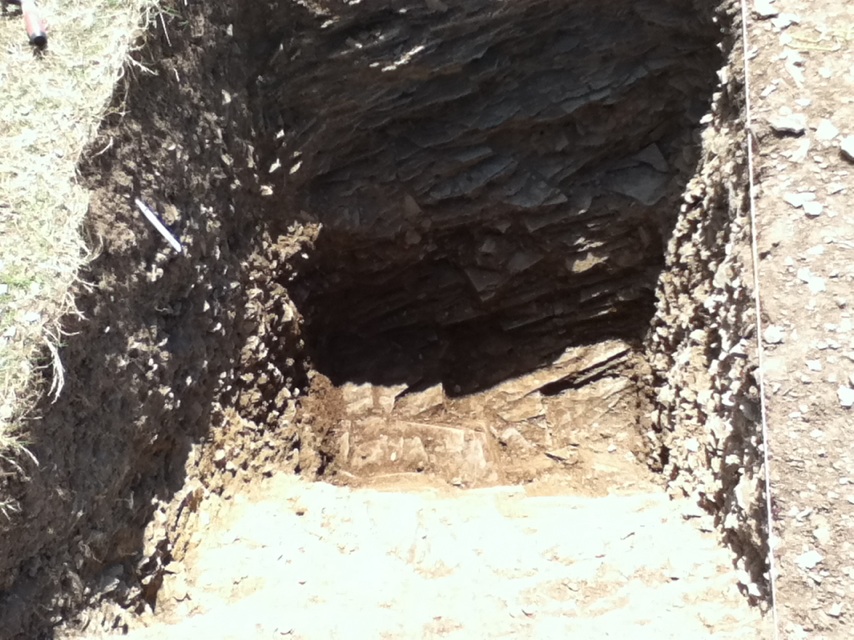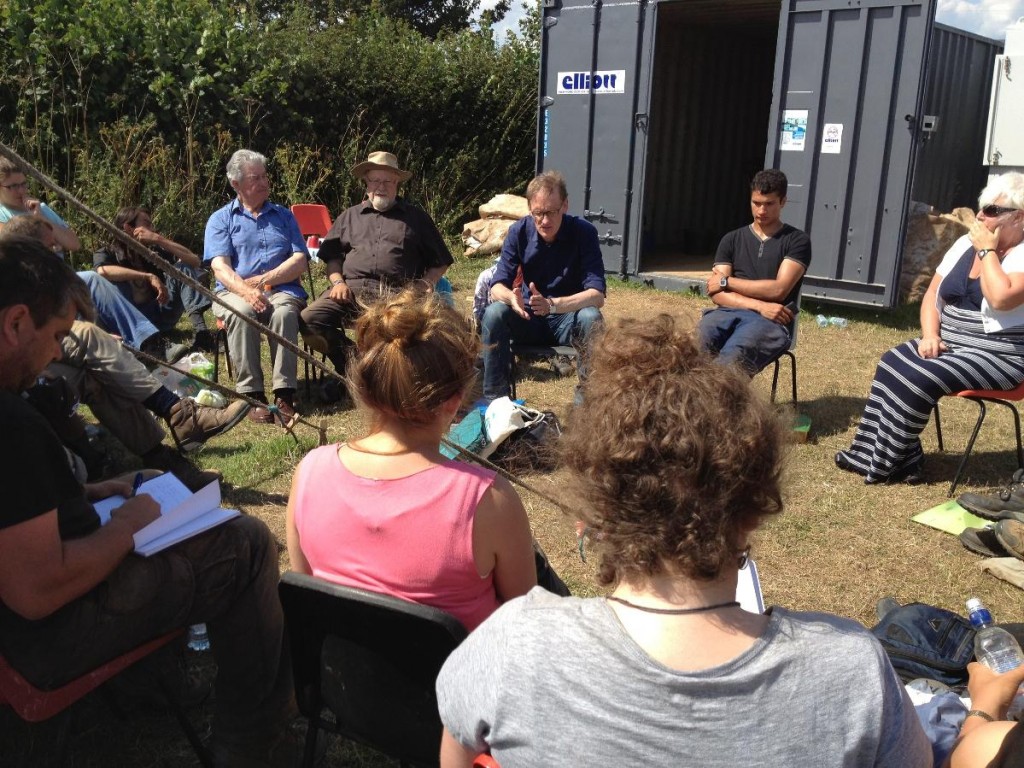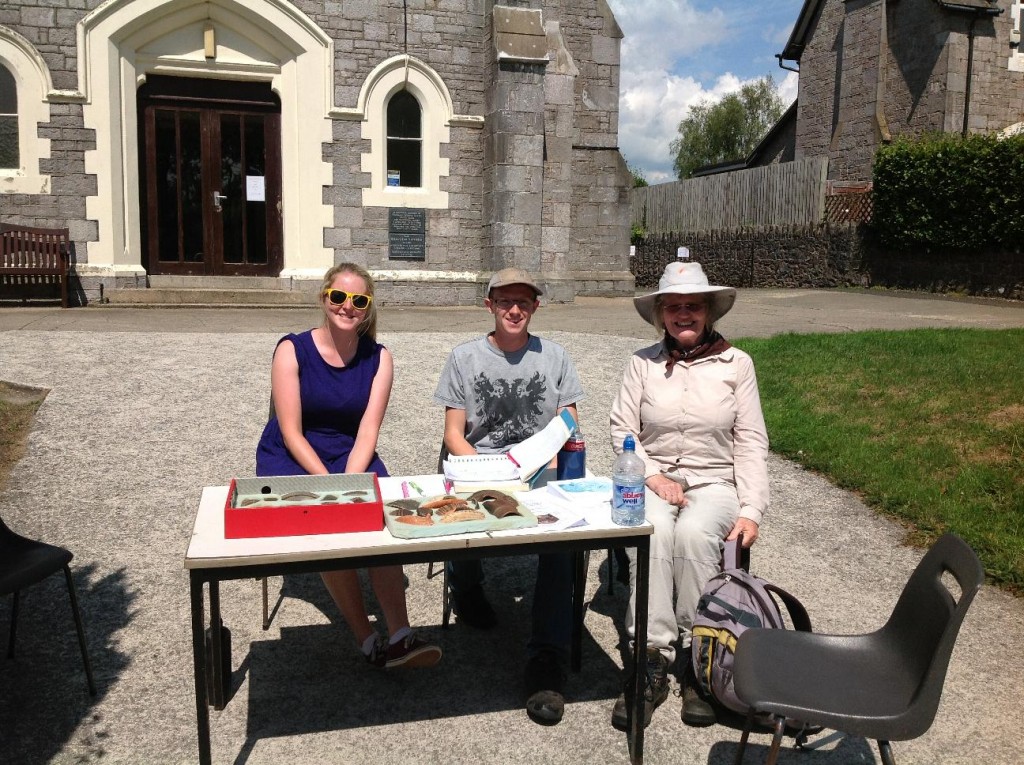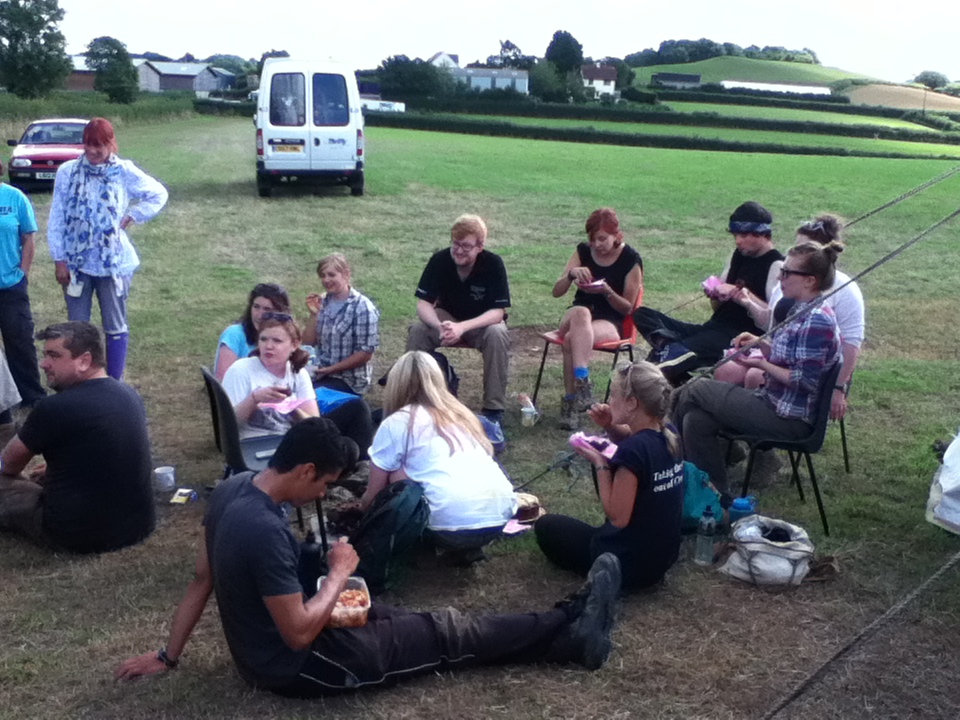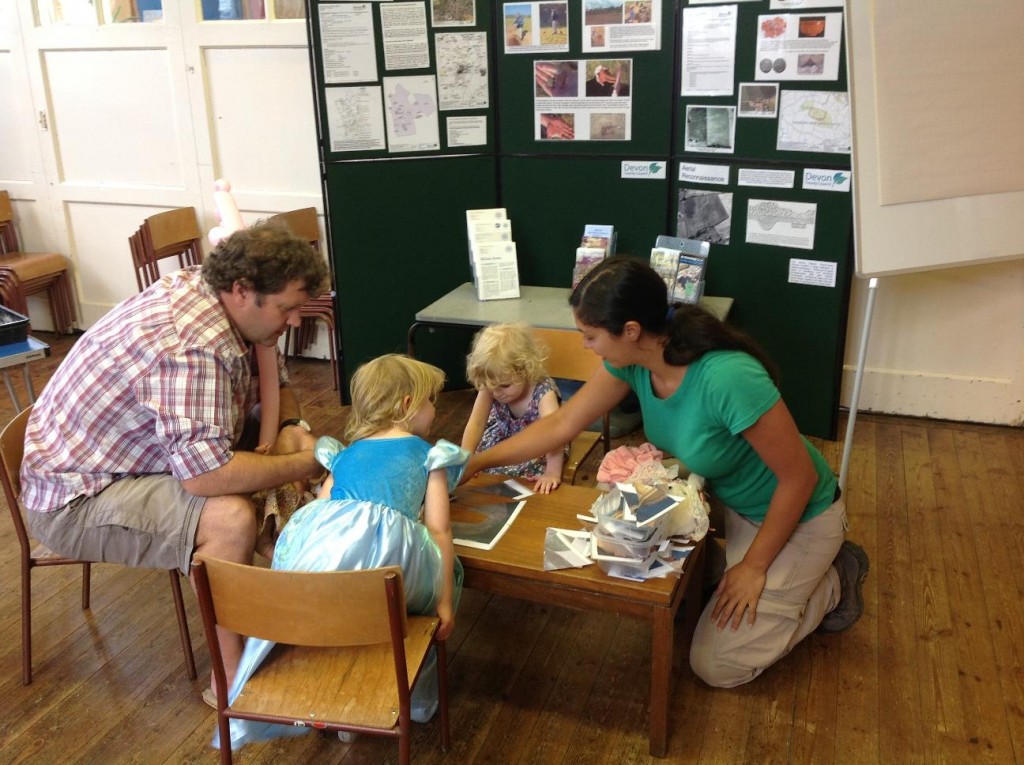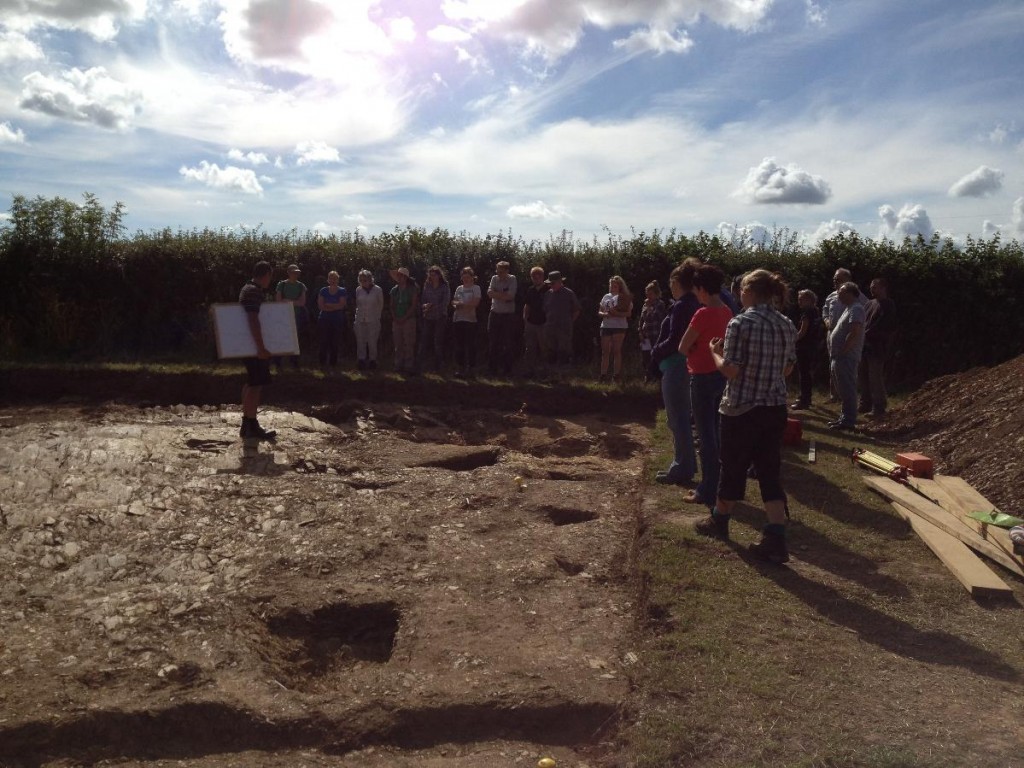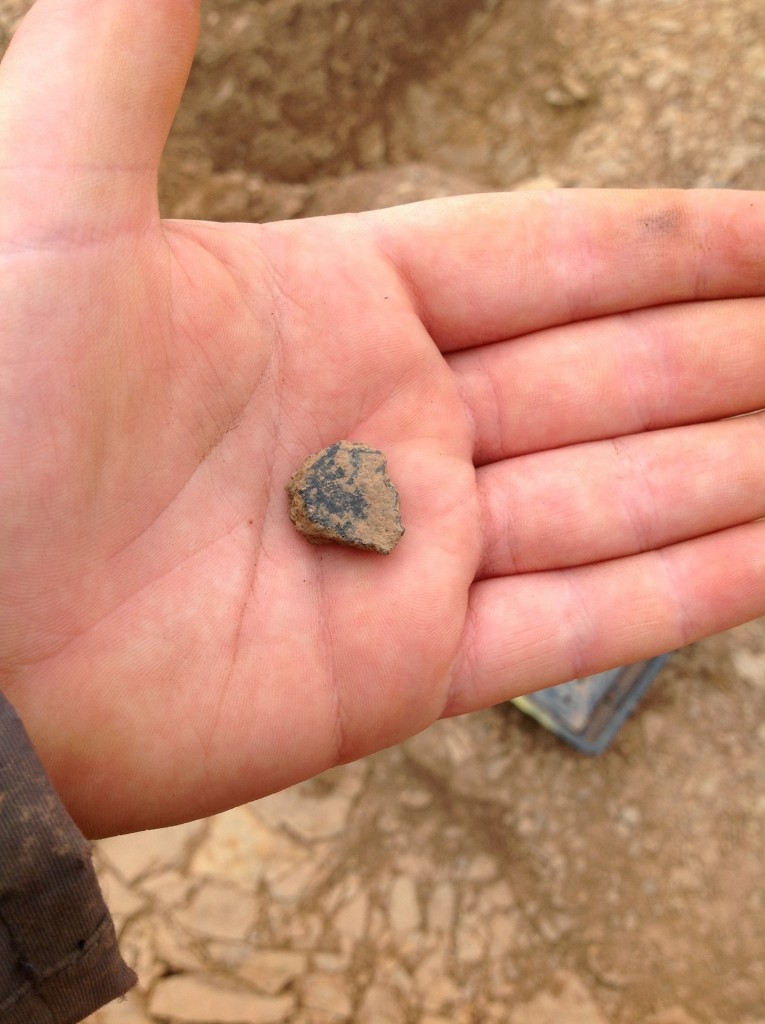A great day to be on site today with one hundred and twenty two finds being found over the course of the day, including the two largest pieces of pottery found thus far. The first was a Romano-British storage vessel, and the second, was a fragment of amphora (itself in several pieces). Work continued as usual on site, with several new volunteers swelling the ranks.
Category: 2013
Day Twelve
Another hot day on site, but with a lot getting done. The Ditch terminals in the South East corner continued to be investigated, and a new slot was started in an attempt to follow the line of a ditch which seems to run into the central ring ditch. across the rest of the site work continued as normal with several features being finished, drawn and recorded.
One such feature was the Bronze/Iron Age pits the last of the slate lining was removed. The feature was then drawn and photographed, and its excavators moved on to another feature.The largest piece f the slate lining was strangely circular with a central hole, this will need further interpretation.
The excavation of the fill of the central ring ditch is progressing well, with around half now having been removed.
Day Eleven
Day Ten
A mostly sunny day at the site for day ten. Further excavation has progressed smoothly and the site continues to reveal additional finds. Today the collection of finds so far has been collated and has been photographed for our digital records.
For some of our volunteers, it was the last day on site. This is what they thought of their experience.
“What an amazing three days we’ve had. Felt very welcome amongst a fantastic and interesting bunch of people. Thanks”
Day Nine
Another hot day on site, the geophysical work in the adjacent field was finished today, as were several features on site. Two features from the south east quadrant of the site were finished, one being a section of a Romano-British field boundary, which was photographed and drawn, and the other was a deep feature that has yet to be interpreted.
Both Bill Horner (Devon County Archaeologist) and Sam Moorhead (National Finds Advisor for the PAS) were on site today, and in the afternoon Sam Moorhead gave students and volunteers a talk on roman coins from the area. During this talk some of the coins found by one of the co-discoverers of the site Jim Wills were passed round, while Sam pointed out key features.
The Hub saw another fairly busy day, and the good weather was made use of, when a display was moved outside.
Day Eight
An exciting day on site today, with plenty of cake all round (Amy one of the Students had her birthday today).
There were also a lot of new volunteers on site so, in spite of the cake, lots of work got done. Even more interesting features were found when yesterday’s geophysical results were loaded up, adding to our knowledge of the (already impressive) amount of archaeology in the area.
The sunny weather brought many visitors to the Hub, with record numbers of people visiting today. The heat was made easier to bear by a cool breeze, meaning that digging conditions were comfortable.
The finds have kept coming, some pieces of Black Burnished Ware were found by students Amy and Chris. At the end of the day the students and volunteers were given an explanation of what has been happening on site by supervisors Marc and Ben.
Day Seven
The second week has started well with the cooler weather and damp ground from yesterday’s rain making digging conditions much nicer than they have been on site. A new group of volunteers started on site, and were given some background information by supervisor Ben. More geophysics is underway in an adjacent field, and is being carried out by first and second year students.
The Bronze Age feature in the northern half of the site has produced the most finds today, with over a dozen coming out of that one feature.
Day Six
Day six has started well, with several pieces of pottery, a pebble, some charcoal and some metalworking slag. A heavy drizzle has set in after the morning break and work is now continuing on site.
The rain continued for much of the day, but we did have the first piece of bone (in the form of a tooth) found on site so far!
Day Five (Continued)
After Marc’s talk Day five continued well, we did one final clean up of the site before starting work exploring the freshly uncovered features. This continued throughout the day, which was hot, but with a nice breeze to cool things down a bit. Despite this the day was still very warm, and an ice cream van brought welcome relief during the morning break. In the later half of the day we had two very important visitors, when the site was visited by both the Dean of Humanities, Professor Nick Kaye and the head of the department of Archaeology, Professor Alan Outram.
A Morning Explanation of the Site so Far (Day Five)
This year’s excavation is taking place on the site that was partially explored last year. This morning the 25 m2 area was explained to students and volunteers by Marc, the Site Director.
This area is thought to have been the site of a small farmstead with surrounding field systems. The central circular feature is a large ring ditch, probably used as drainage for an Iron Age roundhouse located in the centre. Postholes within the ring ditch were thought to be structural features, but one of them contained part of a wooden post, giving these postholes a more modern date. No further structural features from the roundhouse have been found, and it is possible that they have been ploughed out.
At its southernmost point this large ring ditch branches out into two separate features of different depths, and probably also different ages. Slightly north of the large ring ditch a curving feature was uncovered, which with further investigation may turn out to be another, smaller ring ditch. At its eastern and western extremities the large ring ditch is cut by what appear to be pre of early medieval quarrying activities. Two large slots were excavated through the western one of these last year, and no further work is to be done on these features this season.
In the northern and southern portions of the 25 m2 area opened up there are a series of Middle Bronze Age pits, which were dated from pottery and flint finds, some of the flints have also been suggested to have a Neolithic date, providing the oldest date for the site so far.
An ‘L’ shaped feature in the south west corner of the site contained large amounts of Romano-British pottery suggesting a nearby settlement, however, there has been no archaeological evidence found on site to explain the large amount of coinage that a thorough metal detector survey of the site have turned up.
